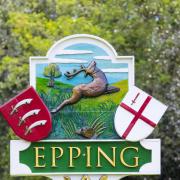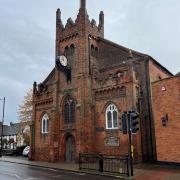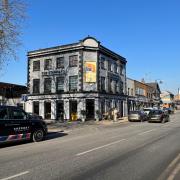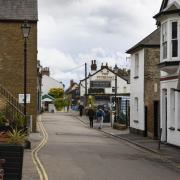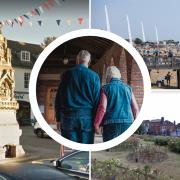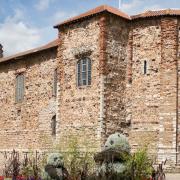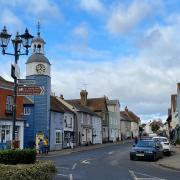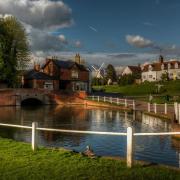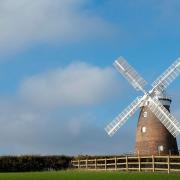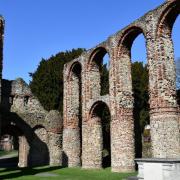Since the Queen granted Chelmsford city status – one of only a handful of honours bestowed in her Diamond Jubilee year of 2012 – there has been a renewed pride in the county town that is pretty much palpable. Indeed, this fillip coincided nicely with the opening of a brand new wing to Chelmsford Museum at Oaklands Park and its manager, Nick Wickenden, reports that since then visitors have been flooding to find out more about the heritage of their new city home.
‘The extension and new displays at the museum have caused visitor numbers to double,’ reports Nick with glee, ‘and we now welcome around 60,000 people every year. The award to Chelmsford of City Status really did generate a new sense of local pride in the city and the museum has been very much part of that pride.’
If local residents and visitors didn’t know a lot about Chelmsford before it became a city, there is no excuse not to now. Chelmsford Museum has had its home at the grand Victorian mansion of Oaklands Park since 1835, but the new contemporary-styled building that opened alongside it just before the Queen made her announcement now provides even more scope to spread out the evidence of thousands of years of Chelmsford’s history.
‘Chelmsford Museum is the place to go to find out all about our local heritage,’ says Nick, who has been involved with Chelmsford’s archaeology since 1979, and with the museum since 1987.
Certainly, there is a lot of evidence to house. The story of Chelmsford is traced from the Ice Ages, through the Roman, Saxon and medieval times, right up to the present day, and there are some memorable artefacts and activities to help bring history to life.
Alongside the fascinating relics of the lives of our ancestors, including collections of coins, glass, ceramics, fine art and natural history, perhaps the most popular exhibits are the slightly more unusual inclusions. Children enjoy dressing up in carnival costumes as old cine footage of Chelmsford Carnival from years gone by plays large-scale on the wall, while the live observation bee hive is another must-see for many.
The ceramics room has an extensive collection of wacky Victorian Castle Hedingham ware, as well as a pot by Turner Prize-winning artist Grayson Perry, who grew up in Chelmsford. The museum’s large collection of Georgian drinking glasses once featured on TV’s Flog It and was described by Paul Martin as one of the best in the country.
Exhibitions are at home in the gleaming modern building. Currently the Bright Sparks exhibition takes a look at the City of Chelmsford’s world-beating industries – such as Marconi, Hoffmann and Cromptons – with hands-on interactive displays to show the engineering principles behind these successes. There is also a 3D model of the Marconi and Hoffmann factories, made by the German Luftwaffe and found in a German airfield after World War II.
‘The city is very proud of its rich industrial and broadcasting heritage,’ says Nick, ‘and these displays give visitors of all ages an excellent overview of the industrial history for which Chelmsford is rightly famous.’
Another source of fame – though perhaps of a different sort – is Chelmsford’s iconic nightclub, Dukes. The club was frequented by the likes of Jamie Oliver and Olly Murs (as well as generations of local clubbers) before closing its doors for the final time in 2012 and is celebrated in its own exhibition, which runs until April this year. Future exhibitions in this space will look at the history of the city’s High Street as well as local art and textiles.
A highly regarded and long-standing department of the museum, which has now been allowed to spread itself in the new building, is The Essex Regiment Museum. This museum-within-a-museum, tells the tale of the County Regiment from its formation in 1741, through its worldwide campaigns, until its amalgamation in the 1950s into the Royal Anglian Regiment. This compelling and comprehensive collection of military uniforms, equipment and memorabilia vividly details the daily, personal life of a soldier throughout the regiment’s history.
There is also a display on its sister regiment, the Essex Yeomanry, which is now part of the Territorial Army. The museum holds archive and personnel records for the Essex Regiment too, which family and military historians are welcome to peruse.
But as well as looking back at Chelmsford’s past, this is a museum that also looks forward. New additions to the collections are always being made through public donation and occasional purchase. ‘One of our most recent arrivals is a Bronze Age gold ring, which was found at Roxwell,’ says Nick. ‘We have also just received a 1945 Planning Vision for Chelmsford. Needless to say, the actual post-war development differed from the vision.’
However the new city of Chelmsford develops over the coming decades, you can be sure that the story will continue to be told at its museum, for all to share in the local pride.




